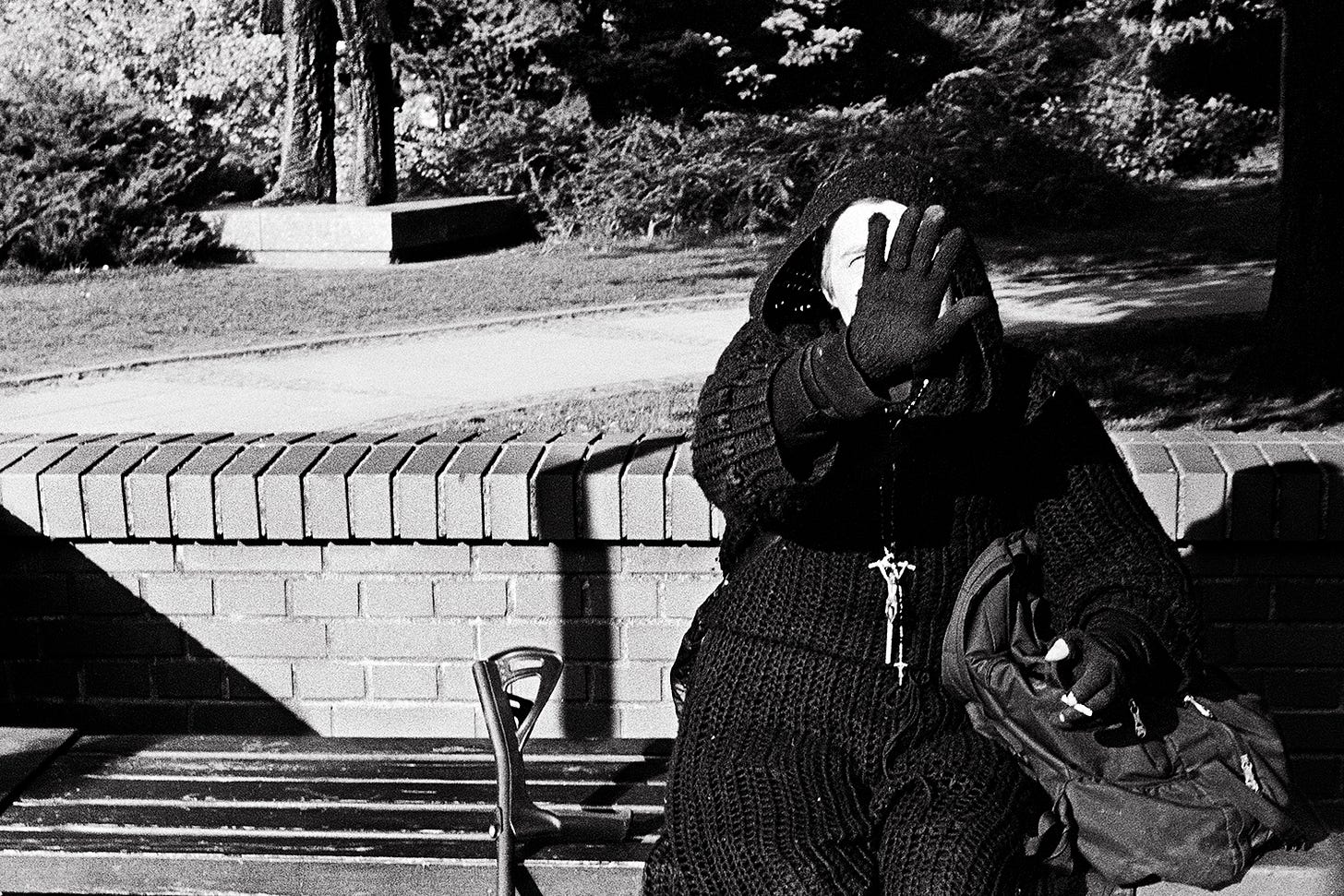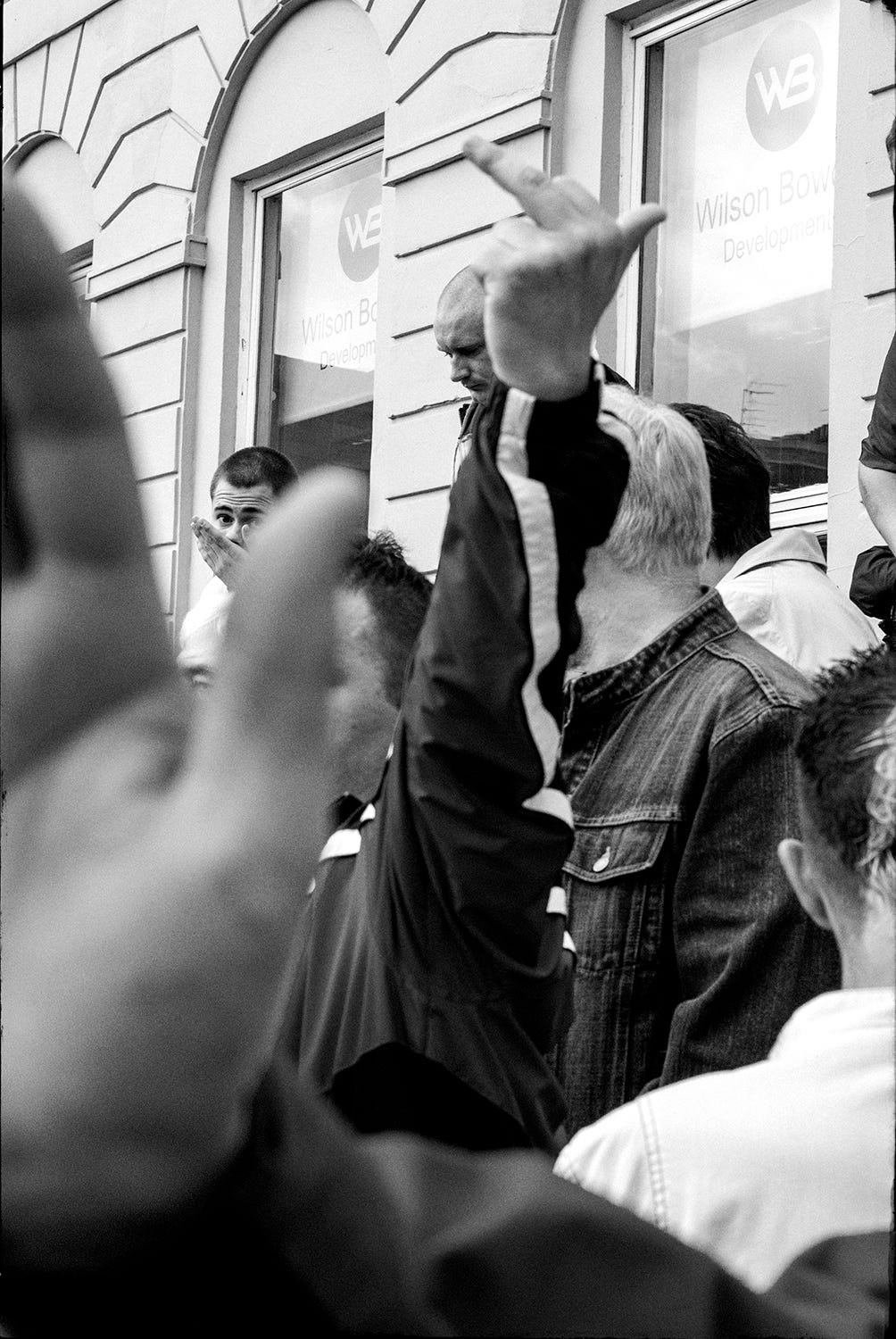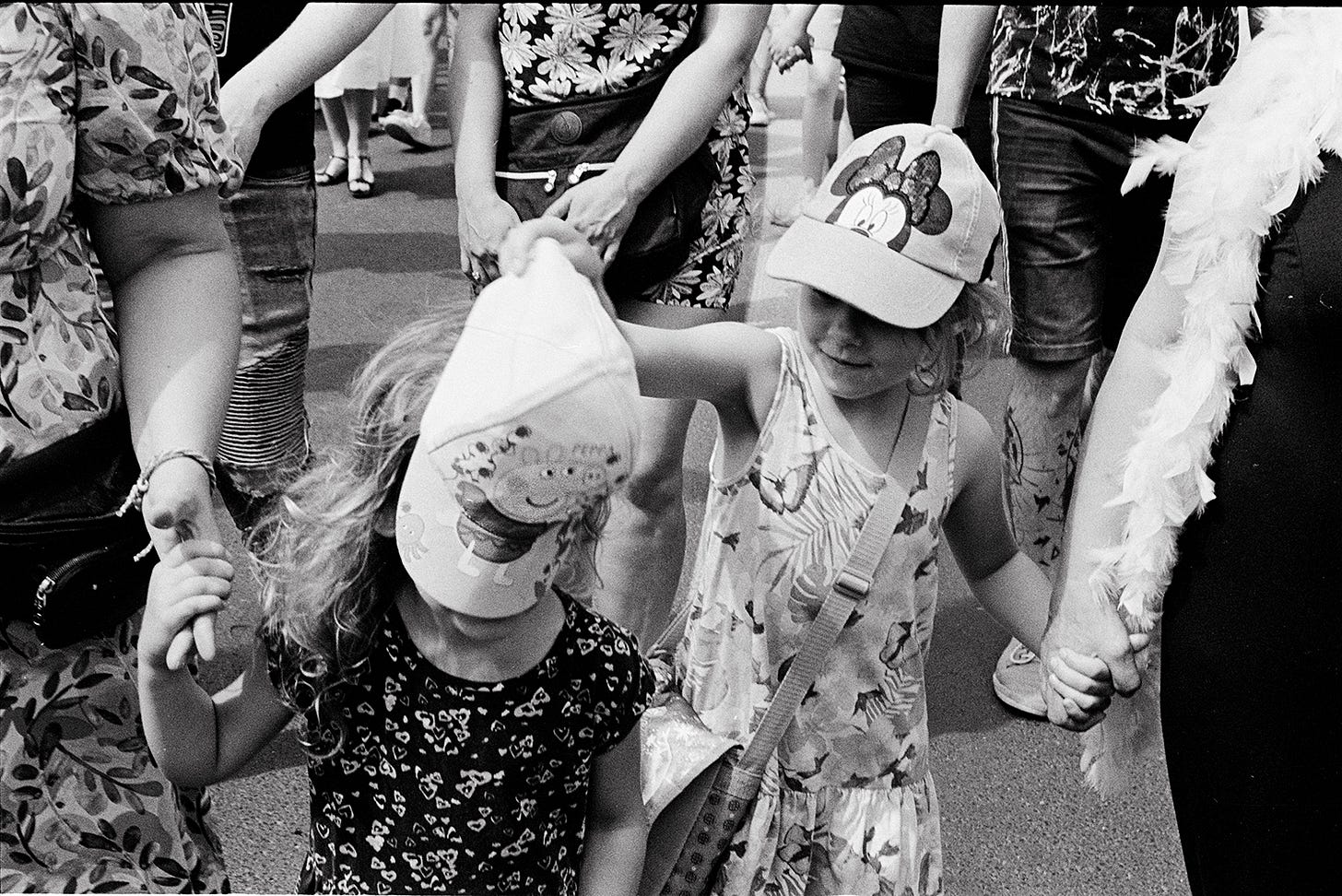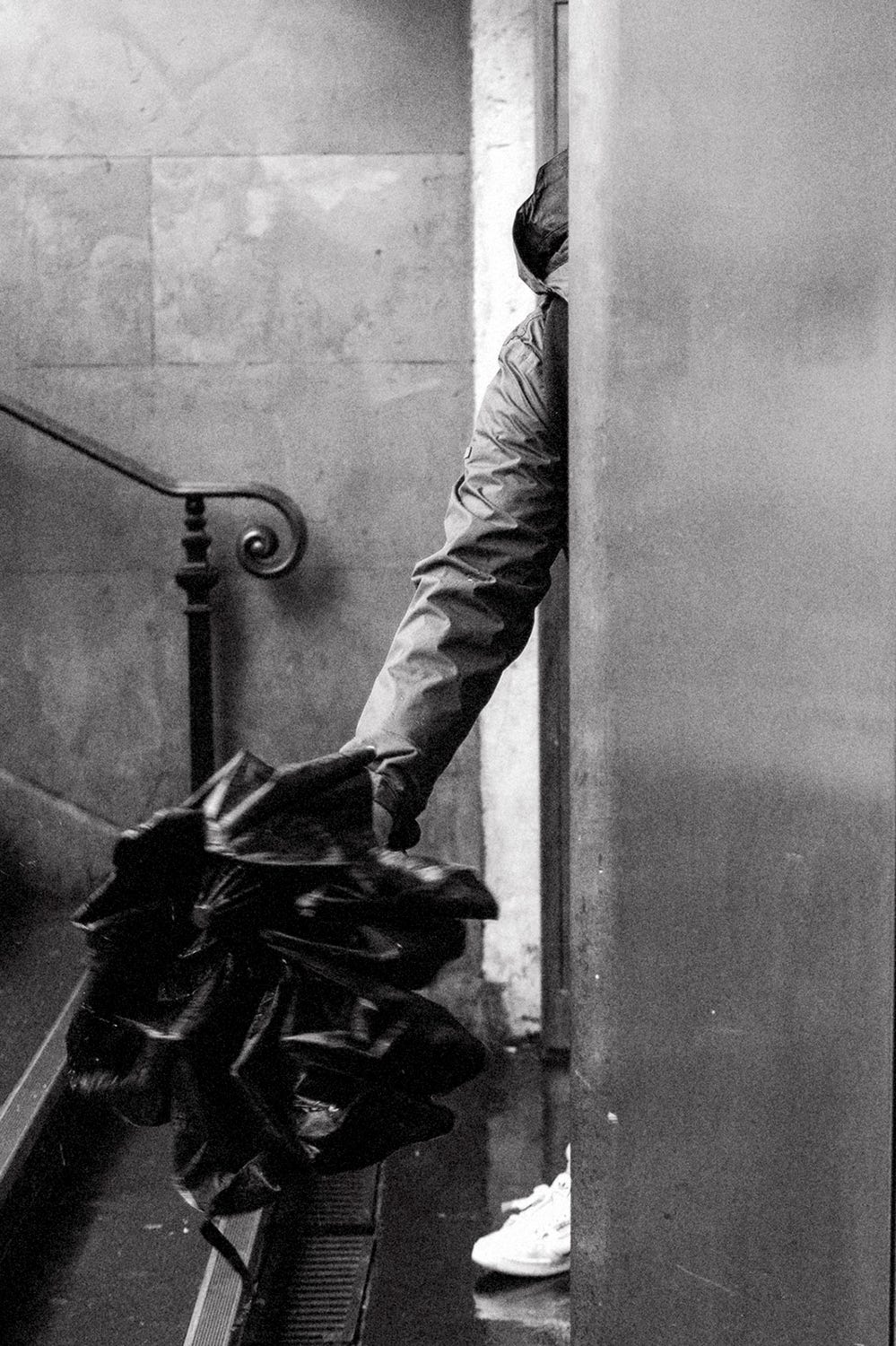Photographing in the street for long enough, despite all efforts to the contrary, we will unintentionally upset someone. Whether a beginner of only a few months, or a street photographer with decades of experience, we should expect to meet some conflict and confrontation as we work. Whether this comes from misunderstanding, misanthropy, or mistake, it is important to have good ‘bedside manner’ to defuse those unfortunate and unpleasant situations. Certainly, much has changed over the last decade and conversations of consent and purpose have rightly arisen. As street photographers we have to strike a balance while not undermining the work we want to do.
In its more classic definition, street photography is making candid images of life as it is lived, or the remnants of that life. The active introduction of the photographer irrevocably changes the scene. As such, to ensure the image appears as I see it, and not an amateur theatre replica, I abide by the tenet, ‘It's better to ask forgiveness than seek permission’. Many inexperienced photographers fixate on the end of this principle while ignoring its opening. Not seeking permission is not, in turn, a tacit licence to be ill-mannered, defensive or aggressive in confrontation, especially not if the person confronting you is being equally or more so. The goal of a confrontation on the street is, of course, de-escalation.
Laws on street photography are different across the world but in most places it is legal to make an image of someone in public where there is no reasonable expectation of privacy. Armed with that knowledge, though, many street photographers - including my younger self - fall back on the argument of rights. ‘I have the right to take this photograph’. Speaking from experience, this is not wise. There are few things that will escalate conflict more than ‘well, actually...’ With more experience comes consideration not only to the question of whether I can take the photograph, but whether I should. Each street photographer must draw their own ethical lines.
While it is natural to feel defensive in the face of confrontation, it is important to remain empathetic. Someone very well may be taking their bad day out on you, however, the possibility remains their aversion to being photographed is something deeper.
With experience it becomes more easy to recognise signs of who may have a sincere basis for objection, versus someone frantically clutching pearls. I've found that immediate threat of the police, or claims that laws have been broken, without discussion, more often than not reveal the person just wants to ‘speak to the manager’. I've learned the quickest and easiest resolution to offer these people is to smile apologetically, and walk away.
The former group, in contrast, will often stop and invite discussion, and I am happy to accept. The first question is often why did I take the photograph, and I'm happy to explain. If intentions are sincere and we are honest in our explanation, I have found people will move from concerned to baffled. With a little Street Photography 101, it's then an easy trip from bafflement to interest. Most such confrontations have ended in pleasant agreement - whether I agree to send them the image, or we agree I not publish the photograph.
Every so often, a quick escape is impossible, or our apology ignored. It is our responsibility to remain calm, be friendly, and not mirror any aggression. Again, empathy is our watchword. We can't know why someone has become upset. It may be difficult to keep composure in the face of insult and accusation of all manner of intentions, but remain composed we must. In these more verbally violent situations, I will offer a succinct apology, give a short explanation why I was interested by the scene, and as a last resort, I will agree not to publish the photo. If this fails to placate the aggressor, I will be direct, assertive, and indicate my exit.
Street photography is not for everyone. Don't be shamed by those who don’t understand it. While it can be exhilarating and rewarding, it is not without its dangers. Confrontations do happen. (I have been assaulted, not once but twice, while working. Once, punched in the side of the head for nothing but taking the above photograph). Nevertheless, as a street photographer I am privileged to be out in the world making photographs of life in the 2020s. It's a good life, and as such, it is important to me that my photography does not negatively impact on someone else's life. Though sometimes unavoidable, no-one should leave an interaction with me having a worse day than they were before. So, a second tenet then for any street photographers, or anyone really, to live by. Put simply... ‘don't be a dick.’
What do you think? How do you deal with confrontation? Let me know in the comments.
Digest, January 2023
Continuing my ‘5 Ws’ of street photography, I answer the question of where do we make street photography. Despite what you may think, the answer is not confined to the street.
As the Photos, mostly newsletter will occasionally fall between the 8 week gap in my articles for Shoot It With Film, I’ll fill the gap with another street photography article from my blog. This month…
In December, I photographed both Idlewild and Mogwai in Glasgow. Despite some film photography mishaps, I’m glad to say there are some photos from the shows now on my website.
Reflecting on my time as guitarist for Warsaw post-rock band, the Frozen North, I remember when we were asked to send music to Mars. It never got off the ground, but making the music was a joy.
Podcasts have taken over my life. I'm not alone in this, so here are the first 5 in an eventual list of 10 that I think you should listen to.
Some Photos
Recommendations
Photographer
Our first woman street photographer recommendation is long overdue. To begin, I want to introduce the photos of Jill Freedman for those who might not know of her. Born in Pittsburgh in 1939, she spent the majority of her life in New York City. Her photography was influenced by Hungarian, André Kertész, and her idol was the great W. Eugene Smith. It is no surprise her photography is as formidable, warm, and passionate as she undoubtedly was.
Book
In 2017 I read a collection of memoirs of a fictional early 1980s post-punk music scene in my home town of Airdrie, Scotland. The book was by David Keenan, and the book was This Is Memorial Device. Reading tales of a musical coming of age set among the schemes of Cairnhill, Craigneuk, Petersburn, and Clarkston was enjoyable but hearing them was tremendous. This month, I bought the audiobook read, no... performed, by Keenan and the telling is as Airdrieonian as it could get. Described in an Audible review as transcendent. I couldn't agree more.
Music
This month I'm back in town for the reunion of the Delgados, tonight (25th January) at the Glasgow Barrowlands. The Lanarkshire band responsible for their acclaimed indie label Chemikal Underground, and their album The Great Eastern, a contender for the true pantheon of classic Scottish records. The band split in 2005 and last year decided to reunite after hanging out together at Stuart Braithwaite's (Mogwai) wedding. There isn't a better choice for music recommendation this month than arguably my all-time favourite gig. The Delgados at the Old Fruitmarket in Glasgow in 2001.
Interesting
Duke University School of Law in Durham, North Carolina have a centre for the study of Public Domain and each January 1st, they celebrate Public Domain day when creative works from 95 years ago become free to all. This year, entering the Public Domain are works by Conan Doyle, Proust, Kafka and Hesse, not to mention the original The Jazz Singer, and Fritz Lang's Metropolis.
And Finally…
If you’ve enjoyed this third issue, I’d be very grateful if you could subscribe, share, and recommend it to any music or photography-loving friends.
This newsletter is free to read, however, I've recently left corporate life and returned to school, so if you like what I do, please consider buying me a roll of film. You can do so by clicking here, or by aiming your camera at the QR code below.
I'm partial to some of that Tri-X 400 if you're asking. Thank you!
















Love this one.
I live in a relatively small town and no one seems to mind having their photo taken but I find you can read people a lot of the time by their body language when they see your camera. There are a lot of "challenged" people on the streets these days and you really have to pay attention and avoid obviously agitated people. Speaking of "your camera" a lot of people use a small stealthy camera (of the Leica M3 type) but some use a big TLR or other equally big medium format camera. Both seem to get good results. I have found that a lot of people are fascinated by the big old camera and like to have their picture taken with it after a friendly conversation.